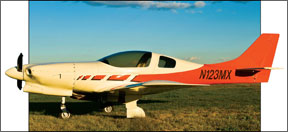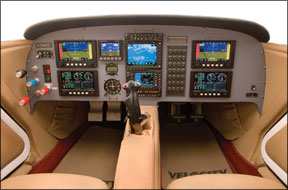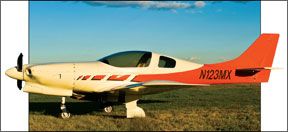The claims sound almost too good to be true. A Lancair IV-P offers 270 knots on 24 GPH or a 1500-mile range with reserves. A Murphy Moose hauls 1300 pounds of cargo and 80 gallons of fuel out of 1000-foot strips and climbs 900 FPM. A nearly-new Epic LT six-seat turboprop can be yours for $300,000 less than a mid-time TBM 700. But unless youre a resourceful and patient type who enjoys the challenge of wrangling maintenance issues or flying an aircraft that demands top-notch piloting technique, you can stop reading here. The designers of kit aircraft didnt repeal the laws of economics or physics. Squeezing out more performance at lower cost comes at a price somewhere else. If youre just looking for a faster or cheaper ride, the tradeoff probably isn’t worth the gain. If tinkering appeals to you, then you need to ask yourself two questions: How much docile handling are you willing to trade for maximizing speed or STOL performance? How willing are you to assume the risks and additional oversight that comes with an aircraft built by an amateur?
No Conforming Standard
The handling characteristics of kit aircraft can be a real surprise to someone coming from the certified world. The full-flaps stall speed for the speediest homebuilts might be what a Cessna 172 does on downwind. Control harmony (the relative forces needed to pitch, roll or yaw the aircraft) or forgiveness to ham-fisted technique varies widely.
That said, the field has come a long way and there are many options for performance tradeoffs. If you want a Lancair IV-Ps 270-knot cruise, you’ll be crossing the airport fence doing 100 knots or more. Stepping down to the Lancair ES can give you 185-knot cruise speeds with a final approach in the 75-knot range. In general, the later designs from any specific company have better handling characteristics.
You need to set your desired performance but also be realistic about your skill in flying that kind of airplane. We spoke with an owner of a Lancair Legacy, who says the Legacys numbers through the pattern are rather like the 9000-pound MU-2 he also owns.
Put a close eye on all the performance numbers, operational limitations and systems before purchase. Some two-seat experimentals have a narrow CG envelope. Just because the aircraft is set up for IFR doesnt mean it has fully redundant systems, lightning protection or the longitudinal stability to fly hands off for more than a few seconds. It may have no stall-warning system and its stall-spin behavior could be … stunning.
Some changes might suit your needs well. Some might be an NTSB report looking for a place to happen. The problem for you as a buyer is that these modifications (or errors) might be buried so deep even a detailed pre-purchase inspection wont find them. Even if you know they exist, you have no way of evaluating their long-term effects. There’s a reason these aircraft are placarded “experimental.”
Variations in the builders attention to detail, following the plans or modifications they made of their own volition can change aircraft performance. Look for excessive control friction and the quality of fit and finish. While not definitive, they give a peek into the care of construction. On a similar note, there is an appeal to something thats “professionally built.” This really means little. What you want to see is that an EAA technical counselor has inspected the aircraft. Such an entry should be in the logbooks or builders log.
Experimentals operate on a different set of airworthiness rules and the builder can do all the maintenance, including the annual inspections (called condition inspections). Unfortunately, they may not catch potential problems that a professional mechanic would. The NTSB noted that, “Incipient problems on relatively new amateur-built aircraft are apparently not being recognized by their amateur mechanics.” You may inherit a problem thats been neglected for years.
That said, most two-seat, fixed-gear designs are simple and few issues are likely to arise. When problems do crop up, you can be a lot more creative with solutions. Anyone who has spent days hunting for a nose-gear bushing for a 1963 Bonanza would envy you. They might also envy the quality of the avionics, or even simple parts like fuel-selector valves that can go into kit aircraft. These can be better than certified. Say no to auto-engine conversions, however. We believe the gains are simply not worth the headaches.
The second-hand owners of a homebuilt can do the repair work just as the builder could, but they need a mechanic to sign off the yearly condition inspection. This isn’t a big deal for common designs without radical modifications.
Beware of designs from a manufacturer thats out of business. Youve got a situation for parts or repairs akin to owning an antique. Actually, this can happen with older models of currently-produced designs. Ongoing improvement may mean there’s no replacement for that damaged aileron or nose gear.
Budget in time and money for transition training, and expect it to be required to insure high-performance homebuilts.
If youre still reading, then perhaps youre made of the stuff that does we’ll living life outside the dowdy, certified rules. There are a lot of designs out there to choose from. For the novice buyer, wed recommend staying with some of the

better-known brands. Here are thoughts on a few, but this is by no means a comprehensive list.
The Allure of Speed
If youre tempted by experimentals, youre probably jonesing for speed. Lancair is a top contender here, with a strong history and vibrant company backing the products. The Lancair 235, 320 or 360 are two-seaters from the early years. These evolved over time into the Lancair Legacy, which can be found in both fixed-gear and retractable versions.
While their relatively high wing-loading means they ride through turbulence well, they are light on the controls. This combo results in a fun airplane, but one that can wear out even the sharpest pilot on a bumpy cross-county. Be sure to get one with an autopilot.
The Lancair IV-P technically offers four seats, but its main appeal is performance. Pressurization combined with installations of 350-HP piston engines, or turboprops of 500-HP or more, lets them cruise over 300 knots up high. Putting the gross weight of a Bonanza on a wing area slightly smaller than an Extra 300, however, makes an aircraft thats too much for some pilots.
The ES looks a lot like the Cessna 350/400, but bears significant differences. The ES-P is the pressurized version; if you can find one of these, they could be a real performer without demanding fighter-pilot ability.
A good alternative to the Lancair line would be the two-place, low-wing Glasairs. There are several models on the used market at any given time. The I and II versions have smaller engines, and the III has the 300-HP Lycoming IO-540. Some Is and IIs are fixed-gear, while all the IIIs are retractable. We see the II-S and Super II-S, stretched versions of the small-engine (180-HP) model, as a potentially good buys if you can find one for a reasonable price.
Velocity aircraft are an evolution of Burt Rutans designs. Theyre roomy with good performance (especially the RG models). They are inherently limited in prop size, which leads to long takeoff and landing distances. It also takes most pilots significant transition time to become comfortable flying them.
A Van for Everybody
Vans Aircraft has 6158 RVs flying as of this writing. Theyve been at it for over 20 years and have refined their designs nicely. If youre trying to decode the Vans numbering system, here it is: The RV-3 and RV-4 are one- and two-seat tailwheel airplanes that were the earliest production designs. The next is the side-by-side RV-6, the most common RV out there. If you see RV-6A, thats supposed to mean its a tri-gear version rather than a tailwheel.
Match-hole tooling (the skins arrive to the builder pre-punched with rivet holes) define the RV-7/7A. These are side-by-side, but a tandem-seat version became the RV-8/8A. The RV-9/9A uses a different wing and tail to work better with 160-HP (or less) Lycoming four-cylinder engines. The others normally have 180-HP or 200-HP Lycomings.
RVs offer good cruise performance with reasonable landing speeds, but all models before the RV-9 are designed more for responsiveness than cruising. You can fly these aircraft IFR, but its hard work and not for the distractible without a working autopilot. The RV-10 is a four-seat cruiser that can hit 165 knots with a big engine up front and is designed as a cross-country aircraft. The design clearly grew from the RV line, but it reminds us much of the Grumman Tiger-with a bunch more ponies up front. It hasnt been around that long, but we found a few for sale.
Backcountry Fun
There are too many options when it comes to slow experimentals with short takeoff runs and astounding climb performance to name here. But there are a few standouts in the field.
The same Glasair that makes the low-wing Glasair-III offers the GlaStar. The original version of this aircraft is a side-by-side two seater. The current Sportsman model is a 2+2. The used market is almost entirely the two-place taildraggers. The model offers terrific takeoff and landing performance with reasonable stall speeds and a good payload.
Jabiru offers kit versions of similar design to its LSA, but with higher gross weight and four seats.
Kitfox has a long line of two-seat, rag and tube aircraft that make for fun Sunday machines. Think of them like light LSAs.
There are many Piper Cub look-alikes out there. Cubcrafters and Legend cub make excellent kits. We also like Rans Aircraft. The S-6 and S-7 are we’ll designed with many factory-made parts and great factory support.
Whats Your Goal?
If all you really want is better speed or better looks than your current Cirrus or Cessna, wed suggest you stay away from kit aircraft. The odds are against you finding an experimental with the handling, dispatch reliability, safety and, even in this economy, resale value comparable to a certified aircraft. Speaking of the economy, the price delta between certified aircraft and roughly comparable homebuilts has narrowed quite a bit.
If youre undaunted by extra headaches in maintenance, energized by the extra demands on your piloting skill and excited by the thought of tinkering more freely with your bird than allowed by more restrictive FAA rules, then a homebuilt could be right for you. You do have the potential to get more performance for less money if youre willing to do the extra work. Also, if youre looking for a VFR, two-place aircraft you’ll have a much better chance of long-term satisfaction than if you need a four-place IFR cruiser.
Buy with a skeptics eye and with the assistance of folks knowledgeable in that specific breed. Be sure you figure adequate pilot training and transition time into the equation. And then brag about your performance or annual inspection costs, and leave other pilots wondering if its too good to be true.


